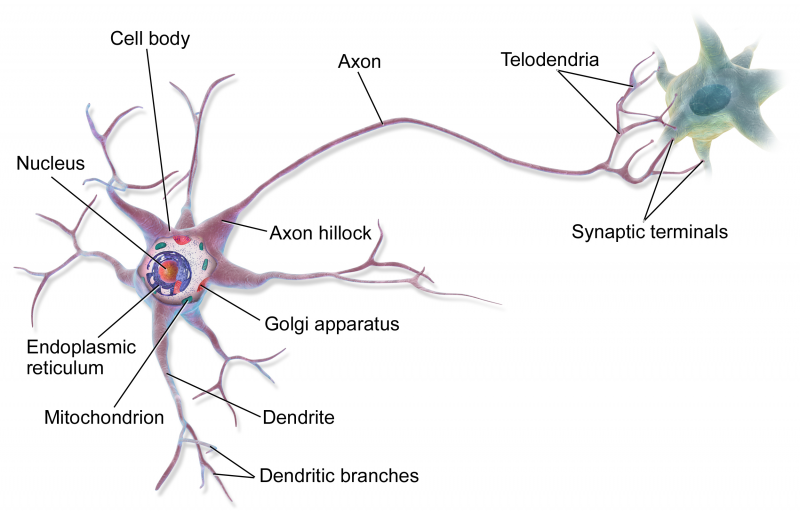An axon, or nerve fiber, is a long projection of a neuron that conducts electrical impulses (action potentials) away from the nerve cell body. Its primary function is to transmit information to other neurons, muscles, and glands. In sensory neurons, axons are referred to as afferent nerve fibers, conducting impulses from the periphery to the spinal cord. Axon dysfunction underlies various neurological disorders. Nerve fibers are classified into three groups (A, B, C) based on myelination and function (sensory/motor). Sensory fibers are also classified into Types I-IV.
1939: Hodgkin and Huxley Employ the Squid Giant Axon
In 1939, Alan Hodgkin and Andrew Huxley began employing the squid giant axon in their experiments, which would later contribute to their full quantitative description of the ionic basis of the action potential.
1941: Erlanger and Gasser Publish Axon Classification
In 1941, Joseph Erlanger and Herbert Gasser published their findings establishing the first classification of axons. Their work proved the hypothesis that the thickness of an axon relates to its nerve conduction velocity, and identified several types of nerve fiber.
1952: Hodgkin and Huxley Obtain Full Quantitative Description of Ionic Basis of Action Potential
By 1952, Alan Hodgkin and Andrew Huxley had obtained a full quantitative description of the ionic basis of the action potential through their work with the squid giant axon. This description led to the formulation of the Hodgkin-Huxley model.
1963: Hodgkin and Huxley Awarded Nobel Prize
In 1963, Alan Hodgkin and Andrew Huxley were jointly awarded the Nobel Prize for their work detailing the ionic basis of the action potential.
Trending

16 minutes ago Nate Bargatze Plans Nashville Theme Park; Team Negotiates Site Locations
16 minutes ago DAZN broadcasts World Sevens Football tournament debut, TNT enhances US distribution.

17 minutes ago Claressa Shields and Che Kenneally Eye Early 2026 Boxing Match
17 minutes ago Raleigh: Showers Expected, Clearing for Mild Weather Before Thanksgiving in North Carolina

17 minutes ago Dolly Parton Addresses Health Issues, Misses Award Ceremony and Dollywood Hall of Fame Induction.
17 minutes ago Indian HAL Tejas Fighter Jet Crashes at Dubai Air Show; Pilot Killed.
Popular

XXXTentacion born Jahseh Dwayne Ricardo Onfroy was a controversial yet...

William Franklin Graham III commonly known as Franklin Graham is...

Cristiano Ronaldo often nicknamed CR is a Portuguese professional footballer...

Candace Owens is an American conservative political commentator and author...

Michelle Obama is an American attorney author and former First...

Marjorie Taylor Greene known as MTG is a far-right American...
